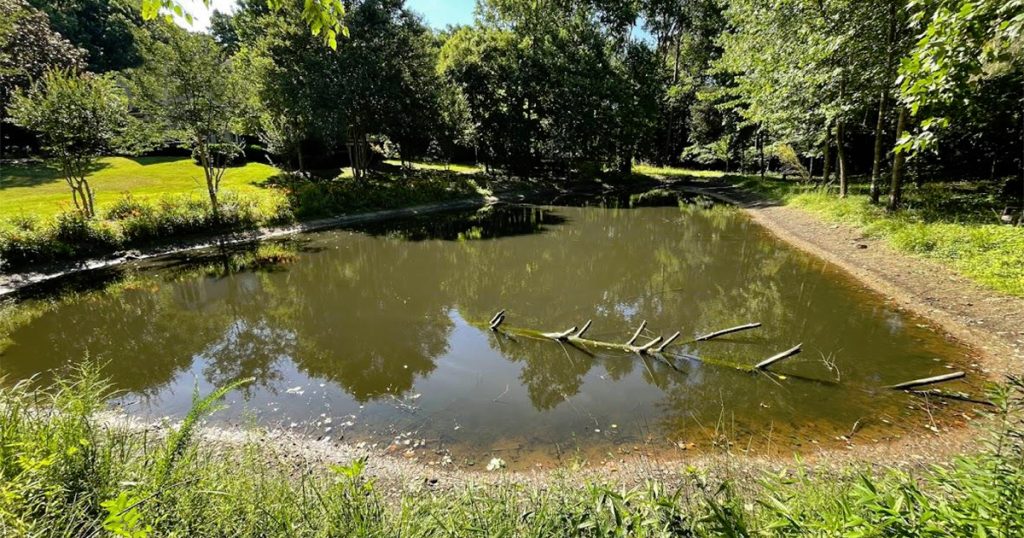Magnet fishing, the hobby that couples the tranquility of fishing with the thrill of a treasure hunt, has grown exponentially in popularity over recent years. The allure of uncovering forgotten relics from under the water’s surface is an undeniable thrill, and each cast brings the potential for a fascinating find. However, just like any outdoor activity, it’s essential to practice appropriate etiquette to ensure the enjoyment and safety of ourselves, others, and the environment. This guide aims to shed light on the important aspects of magnet fishing etiquette, encompassing respect for the environment, consideration for fellow anglers and passersby, proper disposal of found items, and the indispensable role of safety.
Table of Contents
Respect for the Environment

Magnet fishing, the popular pastime that combines the serenity of traditional fishing with the excitement of treasure hunting, requires participants to maintain a strong respect for the environment. This not only ensures the preservation of natural resources and habitats but also enriches the overall magnet fishing experience. Delving deeper into this aspect, we’ll explore how to choose a fishing spot with minimal impact on the ecosystem, follow the “leave no trace” principle, and contribute to a cleaner, healthier environment by removing unwanted metallic waste from our water bodies.
Choosing a Fishing Spot: Ecosystem Preservation
When selecting a location for magnet fishing, it’s essential to be mindful of the delicate balance that exists within natural water ecosystems. Rivers, lakes, and ponds are home to various flora and fauna that contribute to the biodiversity of their surroundings.
As responsible magnet fishers, we should strive to avoid causing any damage to aquatic plants and wildlife when setting up our fishing spot. This may include steering clear of nesting or breeding sites, staying on established paths and avoiding trampling on delicate vegetation, and being conscious of any local or migratory wildlife that may be temporarily using the area. Furthermore, always obey posted signage and regulations, as they are in place to protect both the environment and the safety of the public.
Practicing the “Leave No Trace” Principle While Fishing
Adhering to the “leave no trace” principle is a vital component of responsible magnet fishing. When out at your favorite fishing spot, it’s essential to not only pack out any trash that you generate but also properly dispose of any litter and debris pulled up from the water. By doing so, we can preserve the pristine beauty of our natural surroundings and maintain the integrity of the ecosystem.
Additionally, be prepared with the necessary equipment to clean up after yourself. This may include bringing along a sturdy bag or container to collect litter and debris, as well as wearing gloves to protect your hands from sharp or dirty objects. The simple act of leaving a site cleaner than you found it contributes to the overall well-being of the environment and sets a positive example for others to follow.
The Environmental Impact of Removing Metallic Waste
One of the unsung benefits of magnet fishing is the positive environmental impact that comes with removing metallic waste from our water bodies. Old bikes, shopping carts, cans, and various metal objects can wreak havoc on aquatic ecosystems by leaching harmful substances and disrupting natural habitats.
Each piece of metal you retrieve from the water not only increases your chances of unearthing a hidden treasure but also plays a crucial role in safeguarding the health of our waterways. By actively removing unwanted metal items, we contribute to cleaner, healthier aquatic environments that support thriving plant and animal life.
Fellow Anglers and Passersby

The thrill of magnet fishing extends beyond the fascination of discovering long-lost relics beneath the water’s surface. It also lies in the shared camaraderie that we experience in the great outdoors, alongside fellow anglers and curious passersby. Ensuring a positive, respectful atmosphere for all requires thoughtful actions and mindful etiquette. This piece delves into the aspects of keeping your magnet fishing gear contained, avoiding interference with other lines or people, and engaging positively with the wider community, with the aim of fostering a harmonious environment for everyone.
Managing Magnet Fishing Equipment
Effectively managing your magnet fishing equipment is an essential aspect of this intriguing hobby. Ensuring your gear, including the magnet fishing rope, magnet, grappling hook, and any other tools you use, is contained to your designated space is paramount for the safety and comfort of others sharing the area.
When setting up, choose an area where your equipment will not block pathways or become a trip hazard. Additionally, always store your finds in a safe, secure location. By maintaining an organized and unobtrusive magnet fishing setup, you contribute to a safe, comfortable environment for all.
Casting Your Line with Consideration
Being mindful of the people around us when casting our magnet fishing lines into the water is a vital element of considerate magnet fishing. Always ensure that your magnet won’t interfere with other anglers’ lines or pose a hazard to passersby, boaters, or swimmers in the area. This extends to choosing your casting spot wisely and maintaining a safe distance from others when launching your magnet. Such proactive steps will help avoid potential conflicts and maintain a pleasant atmosphere for everyone at the water’s edge.
Engaging with the Angling Community and Public
The charm of magnet fishing often piques the curiosity of those around us, from fellow anglers to passersby. Embracing this interest and sharing our passion for magnet fishing can foster stronger connections within the angling community and inspire others to take up this fascinating pastime.
Whether it’s through a friendly greeting, a polite nod, or an enthusiastic chat about the wonders of magnet fishing, our interactions can play a significant role in building a sense of camaraderie and community. And, while sharing your own experiences and magnet fishing tips, remember to be patient and understanding. This inclusive attitude could very well encourage a newcomer to join the ranks of magnet fishing enthusiasts.
Proper Disposal of Found Items

Magnet fishing offers a unique blend of excitement and anticipation with every cast into the water. As we uncover the secrets hidden beneath the surface, it’s essential to remember that not all discoveries are harmless or valuable. Our magnet fishing adventures often bring us face-to-face with various types of litter and, occasionally, hazardous materials. Understanding how to dispose of these items properly is a crucial aspect of being a responsible magnet fisher, one that protects both our environment and personal safety.
Distinguishing Trash from Treasure
One of the central tenets of magnet fishing involves distinguishing between valuable finds and mere trash. From rusted bicycles and discarded cans to the occasional odd piece of metallic debris, our magnets often pull up a wide array of items, most of which are classified as litter. Recognizing that these materials do not belong in our water bodies is the first step towards maintaining a cleaner, healthier environment.
Equipping for Proper Disposal
Keeping a sturdy bag or container handy for any trash you retrieve is a basic yet important strategy in magnet fishing. This simple addition to your magnet fishing gear can make a significant difference in efficiently managing and disposing of unwanted items. It’s also advisable to wear heavy-duty gloves when handling your finds, as they can protect you from sharp edges or potentially harmful substances that may be present on older, decayed objects.
Dealing with Hazardous Materials
Sometimes, magnet fishing can turn up potentially dangerous finds such as sharp metal objects, unexploded ordnances (UK & Canada), or other suspicious items. It’s crucial to remember that safety comes first in these situations. Never attempt to handle or dispose of hazardous materials without professional guidance.
If you encounter something potentially dangerous, maintain a safe distance, and contact local authorities immediately. Provide them with as much information as possible about the object and its location. They are equipped with the necessary training and resources to handle and dispose of hazardous materials safely.
Spread Awareness: Responsible Disposal & Magnet Fishing
As magnet fishing enthusiasts, we have an opportunity to spread awareness about the importance of proper disposal of found items. Sharing our experiences and the proper disposal methods we follow can inspire others to do the same. Through education and dialogue, we can foster a magnet fishing community that respects and protects the environment while enjoying the thrill of the hobby.
The Importance of Safety

Magnet fishing, with its enticing allure of buried treasures and unexpected finds, also brings with it the responsibility to prioritize safety. As magnet fishers, we encounter situations that could potentially pose risks, from heavy weights and hazardous materials to challenging weather conditions. Having an in-depth understanding of these potential hazards and the appropriate safety measures is a must for every magnet fishing enthusiast, whether you’re a seasoned veteran or a novice angler.
Essential Safety Gear for Magnet Fishing
A critical step in ensuring safety while magnet fishing is equipping oneself with appropriate safety gear. This can dramatically reduce the risk of injury and provide a more comfortable and safer experience.
Wearing gloves is essential when handling magnets and retrieved objects, as they protect against sharp edges and possible contaminants. Sturdy footwear provides good traction and reduces the risk of slipping or falling near water bodies. Including a first aid kit in your magnet fishing gear is also a wise idea. It ensures immediate response to minor injuries like cuts or scrapes.
Awareness of Surroundings and Potential Risks
Awareness is a powerful tool in maintaining safety during magnet fishing. Be alert and conscious of your surroundings. Consider the potential risks involved in your chosen location, from busy paths and high-traffic areas to steep or slippery banks.
When your magnet becomes stuck, don’t pull too hard or suddenly, as it can lead to falling into the water or straining a muscle. Be patient, try different angles, or consider using a grappling hook to release the magnet. Remember to position your magnet and line in a manner that doesn’t pose a tripping hazard for others in the area.
Adapting to Weather Conditions and Water Bodies
Mother Nature can often be unpredictable, and weather conditions can change rapidly. Always check the local weather forecast before you venture out for magnet fishing. Avoid fishing during severe weather conditions like storms or heavy winds, which can not only make casting difficult but can also increase the risk of accidents.
Similarly, water bodies themselves can be unpredictable. Currents can be stronger than they appear, and the water can suddenly become deep a few feet from the shore. Always respect the water and never put yourself at risk for the sake of a potential find.
In essence, magnet fishing etiquette is about practicing respect—for the environment, for other people, and for safety. By taking these considerations to heart, we can ensure that our exciting hobby continues to grow in a positive and sustainable manner.
So, next time you cast your magnet line, remember you’re not just seeking hidden treasure. You’re also upholding the values of a responsible and caring magnet fishing community. Here’s to many more fun and respectful magnet fishing adventures ahead!

